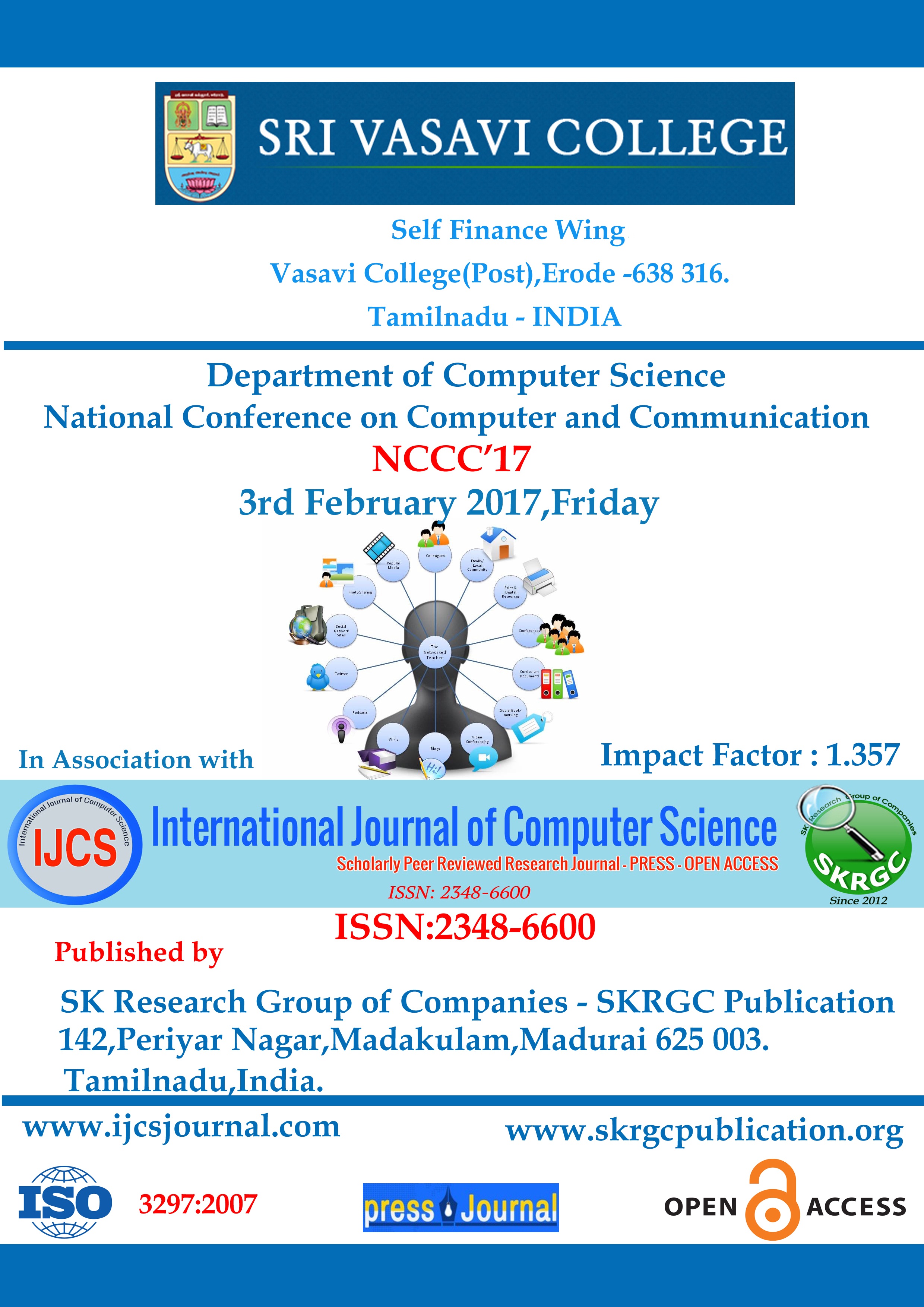INFORMATION REPRESENTAION AND RETRIVAL IN SEMANTIC WEB using UNSTRUCTURED DATA
Sri Vasavi College, Erode Self-Finance Wing, 3rd February 2017. National Conference on Computer and Communication, NCCC’17. International Journal of Computer Science (IJCS) Published by SK Research Group of Companies (SKRGC)
Download this PDF format
Abstract
Nowadays, large quantity of data is being accumulated in the data repository. For thousands of years people have realized the importance of archiving and finding information. With the advent of computers, it became possible to store large amounts of information; and finding useful information from such collections became a necessity. The huge increase in the amount and complexity of reachable information in the World Wide Web caused an excessive demand for tools and techniques that can handle data semantically. The current practice in information retrieval mostly relies on keyword-based search over full text data, which is modeled with bag-of-words. However, such a model misses the actual semantic information in text. The purpose of Web mining is to develop methods and systems for discovering models of objects and processes on the World Wide Web and for web-based systems that show adaptive performance. The integration of the two fast-developing scientific research areas Semantic Web and Web Mining is known as Semantic Web Mining. The huge increase in the amount of Semantic Web data became a perfect target for many researchers to apply Data Mining techniques on it. In this paper we study the techniques to represent the semantic web information and semantic web mining..
References
[1] Soner Kara,Ozgur Alan,Orkunt Sabuncu(2010).“An Ontology-Based Retrieval System Using Semantic Indexing“,ICDE Workshops2010,978-1-4244-6523-1/10.
[2] Manoj Manuja & Deepak Garg.“ Semantic Web Mining of Un-structured Data: Challenges and Opportunities“,International Journal of Engineering (IJE), Volume (5) :Issue (3) : 2011
[3] Thomas R. Gruber. “Toward principles for the design of ontologies used for knowledge sharing”, Int. J. Hum.- Comput. Stud., 43(5-6):907–928, 1995
[4] Yuangui Lei, Victoria S. Uren, and Enrico Motta.” Semsearch: A search engine for the semantic web”, In EKAW, pages 238–245, 2006.
[5] Christopher D. Manning, Prabhakar Raghavan, and Hinrich Schtze. “Introduction to Information Retrieval”, Cambridge University Press, New York, NY, USA, 2008.
[6] Doruk Tunaoglu, Ozgur Alan, Orkunt Sabuncu, Samet Akpinar, Nihan K. Cicekli, and Ferda N. Alpaslan. “Event extraction from turkish football web-casting texts using handcrafted templates”, In In Proc. of Third IEEE Inter. Conf. on Semantic Computing (ICSC)(inpress), 2009.
[7] Haofen Wang, Kang Zhang, Qiaoling Liu, Thanh Tran, and Yong Yu. “Q2semantic: A lightweight keyword interface to semantic search”, In ESWC, pages 584–598, 2008.
[8] S.M.Patil,D.M.Jadhav (2012).”semantic information retrieval using ontology and SPARQL for cricket”,International Journal of Advances in Engineering & Technology,ISSN:2231-1963 vol.4,issue 2,pp.354-363
[9] Gerard Salton, A. Wong, and C. S. Yang. “A vector space model for automatic indexing”, Commun. ACM, 18(11):613–620, 1975.
[10] The semantic web wiki, https://semanticweb.org, 2008.
Keywords
Semantic Web, RDF, Semantic Indexing, Ontology, semantic web mining.

